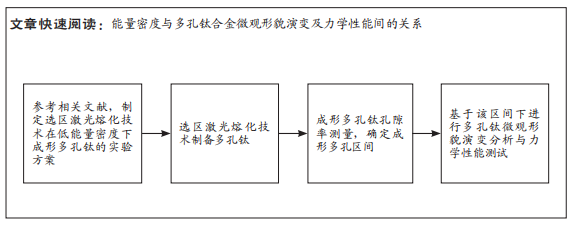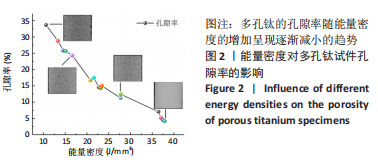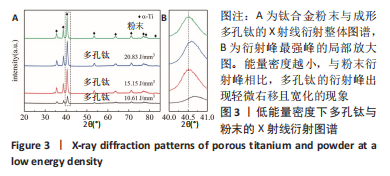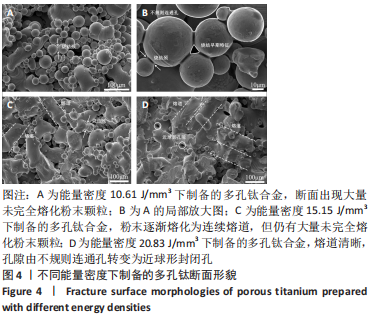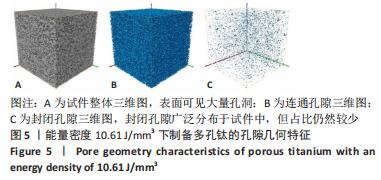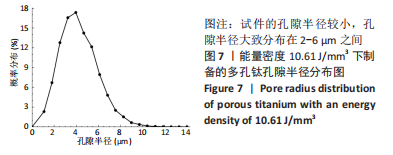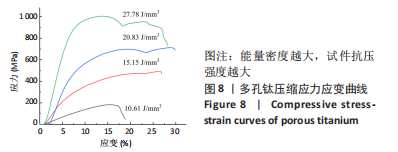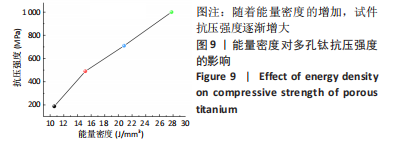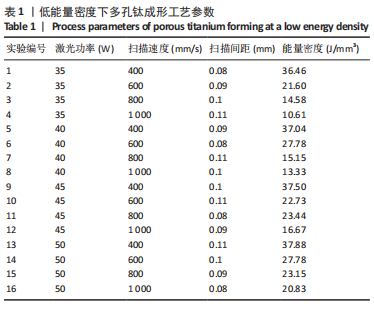[1] WANG ZM, JIA YF, ZHANG XC, et al. Effects of different mechanical surface enhancement techniques on surface integrity and fatigue properties of Ti-6Al-4V: a review. Crit Rev Solid State Mater Sci. 2019;44(6):445-469.
[2] WANG F, WANG JJ, LI QS, et al. Analysis and research of the high-cycle fatigue fracture mode based on stress ratio and residual stress of Ti-6Al-4V. Adv Mater Sci Eng. 2022;2022:1-9.
[3] KALANTARI K, SALEH B, WEBSTER TJ. Biological applications of severely plastically deformed nano-grained medical devices: a review. Nanomaterials. 2021;11(3):748.
[4] JOSKA L, FOJT J, MESTEK O, et al. The effect of a DLC coating adhesion layer on the corrosion behavior of titanium and the Ti6Al4V alloy for dental implants. Surf Coat Technol. 2012;206(23):4899-4906.
[5] MARIN E, FUSI S, PRESSACCO M, et al. Characterization of cellular solids in Ti6Al4V for orthopaedic implant applications: trabecular titanium. J Mech Behav Biomed Mater. 2010;3(5):373-381.
[6] LIU S, SHIN YC. Additive manufacturing of Ti6Al4V alloy: a review. Mater Des. 2019;164:107552.
[7] 王建忠,敖庆波,荆鹏,等.多孔钛的制备及应用[J].稀有金属材料与工程, 2022,51(5):1907-1918.
[8] 赵立杰,张芳,彭军,等.多孔金属材料的制备工艺研究进展及应用[J].粉末冶金工业,2022,32(5):110-116.
[9] 肖健,邱贵宝.大孔径高孔隙率烧结泡沫钛的造孔剂研究述评[J].中国材料进展,2018,37(5):372-378.
[10] 刘永宁,王智祥,刘锦平,等.造孔剂法制备泡沫钛的研究现状与进展[J].粉末冶金技术,2019,37(4):306-311.
[11] SHI MJ, LIU SF, WANG QG, et al. Preparation and properties of titanium obtained by spark plasma sintering of a Ti powder-fiber mixture. Materials. 2018;11(12): 2510.
[12] ZHANG LC, CHEN LY. A review on biomedical titanium alloys: recent progress and prospect. Adv Eng Mater. 2019;21(4):1801215.
[13] 高祥熙,杨平华,乔海燕,等.基于μCT表征的SLM成形GH3536高温合金缺陷特征[J].材料工程,2022,50(10):63-72.
[14] 廉艳平,王潘丁,高杰,等.金属增材制造若干关键力学问题研究进展[J].力学进展,2021,51(3):648-701.
[15] SHIPLEY H, MCDONNELL D, CULLETON M, et al. Optimisation of process parameters to address fundamental challenges during selective laser melting of Ti-6Al-4V: a review. Int J Mach Tools Manuf. 2018;128:1-20.
[16] 高芮宁,熊胤泽,张航,等.SLM制备径向梯度多孔钛/钽的力学性能及生物相容性[J].稀有金属材料与工程,2021,50(1):249-254.
[17] CHANG C, HUANG J, YAN XC, et al. Microstructure and mechanical deformation behavior of selective laser melted Ti6Al4V ELI alloy porous structures. Mater Lett. 2020;277:128366.
[18] HAO MZ, WEI CJ, LIU X, et al. Quantitative evaluation on mechanical characterization of Ti6Al4V porous scaffold designed based on Weaire-Phelan structure via experimental and numerical analysis methods. J Alloy Compd. 2021;885:160234.
[19] 吴先哲,刘红旗,王富友,等.激光选区熔化技术制造医用多孔金属材料研究现状[J].激光杂志,2018,39(11):8-17.
[20] GOTOH R, FURST BI, ROBERTS SN, et al. Experimental and analytical investigations of AlSi10Mg, stainless steel, Inconel 625 and Ti-6Al-4V porous materials printed via powder bed fusion. Prog Addit Manuf. 2022;7(5):943-955.
[21] SHI CL, LU NN, QIN YR, et al. Study on mechanical properties and permeability of elliptical porous scaffold based on the SLM manufactured medical Ti6Al4V. Plos One. 2021;16(3):e0247764.
[22] LIAO BO, XU C, LI W, et al. Bionic mechanical design and SLM manufacture of porous Ti6Al4V scaffolds for load-bearing cancellous bone implants. Acta Bioeng Biomech. 2021;23(3):97-107.
[23] BARTOLOMEU F, COSTA MM, ALVES N, et al. Selective Laser Melting of Ti6Al4V sub-millimetric cellular structures: prediction of dimensional deviations and mechanical performance. J Mech Behav Biomed Mater. 2021;113:104123.
[24] RAN QC, YANG WH, HU Y, et al. Osteogenesis of 3D printed porous Ti6Al4V implants with different pore sizes. J Mech Behav Biomed Mater. 2018;84:1-11.
[25] DU Y,LIANG HX,XIE DQ,et al.Design and statistical analysis of irregular porous scaffolds for orthopedic reconstruction based on voronoi tessellation and fabricated via selective laser melting (SLM). Mater Chem Phys. 2020;239:121968.
[26] GE JG, HUANG J, LEI YP, et al. Microstructural features and compressive properties of SLM Ti6Al4V lattice structures. Surf Coat Technol. 2020;403:126419.
[27] JING YL, WANG P, YAN XL. Effect of process parameters and layer thickness on the quality and performance of Ti-6Al-4V fabricated by selective laser melting. Coatings. 2021;11(11):1323.
[28] JIANG HZ, LI ZY, FENG T, et al. Effect of process parameters on defects, melt pool shape, microstructure, and tensile behavior of 316L stainless steel produced by selective laser melting. Acta Metall Sin(Engl Lett). 2021;34:495-510.
[29] 孙靖,吴俊,朱忠良,等.激光能量密度对选区激光熔化成形Al_4SiC_4/AlSi10Mg复合材料显微组织的影响[J].机械工程材料,2022,46(8):68-74.
[30] COSMA C, KESSLER J, GEBHARDT A, et al. Improving the mechanical strength of dental applications and lattice structures SLM processed. Materials. 2020;13(4):905.
[31] 尹浜兆,秦瑜,温鹏,等.激光粉末床熔融制备金属骨植入物[J].中国激光, 2020,47(11):8-25.
[32] 姚讯杰,王佳玮,杨雁程,等.金属构件激光增材制造缺陷产生机理及控制机制探究[J].中国激光,2022,49(14):286-296.
[33] ZHOU YS, LIU YD, SUN XH, et al. Effect of heat treatment on the formed specimen of TC4 titanium alloy by selective laser melting variable parameter forming process. Appl Phys A. 2022;128(10):917.
[34] FOTOVVATI B, RAUNIYAR S, ARNOLD JA, et al. Experimental, computational, and data-driven study of the effects of selective laser melting (SLM) process parameters on single-layer surface characteristics. Int J Adv Manuf Technol. 2022; 123(1-2):119-144.
[35] 毛江虹,罗斌莉,杨晓康.空冷条件下医用TC4合金的组织与相转变[J].热加工工艺,2021,50(22):153-158.
[36] 时国浩.激光熔化沉积工艺参数对Ti6Al4V合金组织与性能影响的研究[D].哈尔滨:哈尔滨工业大学,2021.
[37] 毛新华,刘辛,谢焕文,等.制备方法对3D打印用Ti-6Al-4V合金粉体特性的影响[J].材料研究与应用,2017,11(1):13-18.
[38] 杨建明,曹赛男,王永宽,等.水基粘结剂3DP法三维打印多孔316L不锈钢的研究[J].热加工工艺,2022,51(2):60-64.
[39] 黄培云.粉末冶金原理[M].北京:冶金工业出版社,1997:1-2.
|
